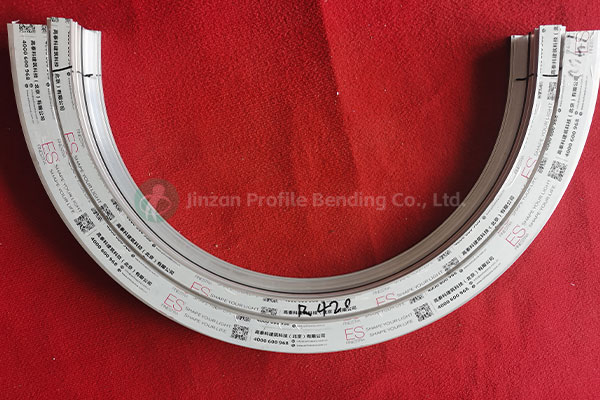Redefining the construction industry with innovative solutions, cuttin-edge technology and sustainable practices
Profile Bending 2025-06-23
The drawing process is a crucial manufacturing technique in metal processing that involves reducing the cross-section of a metal workpiece by pulling it through a die. This method is widely used in various industries, including automotive, aerospace, and construction, due to its numerous advantages and significant contributions to the production of high-quality metal components. This article delves into the significance of the drawing process in metal processing and highlights its key advantages.
Drawing can be performed with different metals, including steel, aluminum, copper, and brass. The process can be categorized into two main types:bar drawing andwire drawing. Bar drawing involves pulling rods or bars through a die to reduce their diameter, while wire drawing focuses on producing thin wires from larger metal rods. The drawing process can be executed in different forms, such as cold drawing, hot drawing, and impact drawing, each tailored to specific requirements and materials.
Significance of the Drawing Process
1.Precision and Dimensional Accuracy: One of the foremost reasons for employing the drawing process is its ability to produce components with high precision and dimensional accuracy. The process ensures uniform cross-sections and tight tolerances, which are essential for parts that need to fit together seamlessly in larger assemblies.
2.Improved Mechanical Properties: Drawing induces strain hardening in metals, which enhances their mechanical properties. As the metal is drawn, its grain structure is refined, resulting in increased strength, hardness, and fatigue resistance. This improvement is particularly advantageous in applications where durability and performance are critical.
3.Versatility in Materials and Shapes: The drawing process is highly versatile and can be applied to a wide range of metals and alloys. It enables the production of complex shapes and profiles, such as channels, beams, and tubes, making it suitable for various applications across different industries.
4.Reduction of Material Waste: Compared to other metal forming processes, drawing minimizes material waste. The process typically uses less material because it involves elongating the existing metal rather than cutting it away. This efficiency not only saves costs but also contributes to more sustainable manufacturing practices.
5.Enhanced Surface Finish: The drawing process can achieve smooth surface finishes, reducing the need for additional machining or finishing processes. This quality is particularly important in industries such as electronics and automotive, where aesthetics and performance are paramount.
6.Cost-Effectiveness: While the initial setup costs for drawing dies can be significant, the long-term benefits often outweigh these expenses. The ability to produce high volumes of uniform parts efficiently makes drawing a cost-effective solution for mass production, especially in the automotive and construction sectors.

Advantages of the Drawing Process
1.High Production Rates: The drawing process can be automated, allowing for high-speed production runs. This capability is essential for meeting the demands of high-volume manufacturing environments while maintaining quality control.
2.Customization: Drawing can be tailored to meet specific customer requirements. Manufacturers can design custom dies to create unique shapes and dimensions, providing flexibility to respond to market needs.
3.Reduction in Post-Processing: Since the drawing process can achieve excellent tolerances and surface finishes, there is often less need for post-processing operations. This not only accelerates the production timeline but also reduces overall manufacturing costs.
4.Scalability: The drawing process can easily be scaled to produce both small and large quantities of parts. This scalability allows manufacturers to adjust their production levels according to market demand without significant changes to their processes.
5.Integration with Other Processes: Drawing can be effectively combined with other manufacturing processes, such as extrusion and stamping. This integration allows for the creation of complex assemblies and components in a single production line, enhancing overall efficiency.
6.Innovation in Design: The drawing process encourages innovation in product design. Engineers can experiment with new shapes and materials, pushing the boundaries of what is possible in metal fabrication. This creativity can lead to the development of advanced products that meet emerging industry standards.
The drawing process in metal processing is of significant importance due to its ability to produce high-quality, precise, and strong components while minimizing waste and costs. Its versatility, high production rates, and potential for customization make it a preferred choice in various industries. As technology continues to advance, the drawing process is likely to evolve further, incorporating new techniques and materials that will enhance its significance in the manufacturing landscape. Embracing the advantages of drawing will enable industries to meet the growing demand for efficient, high-performance metal components in an increasingly competitive market.